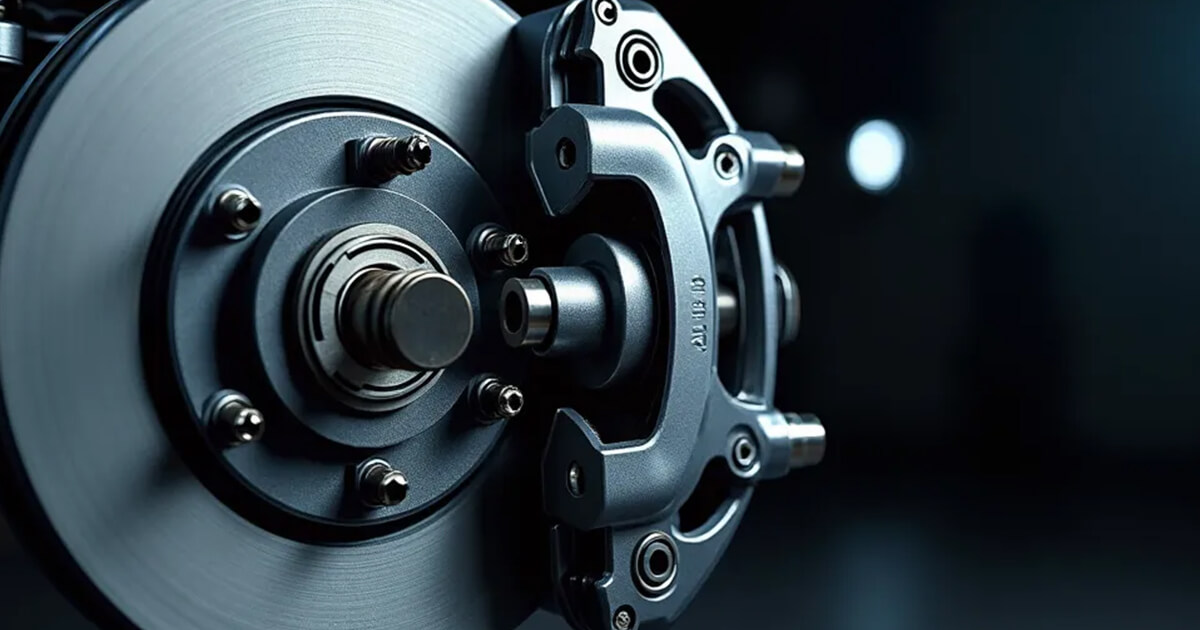What is an automobile’s most critical safety feature? Some will think of airbags, some will mention seatbelts, while others will include features like a rolling cage, ABS, and tires. The answer to this question is quite fundamental, namely the braking system.
Brakes are important because not only do they stop a vehicle but also help in reducing its speed. They first started as mechanical processes (drum brakes) that had their own advantages and disadvantages. They stopped cars but also caused safety issues for passengers and motorists alike.
Motor vehicles, with time, evolved, became quicker and complex. Disc brakes became the preferred choice for all four wheels. They go along well with anti-lock braking processes to provide robust stopping power. These processes became smart to help vehicles slow down and prevent accidents in case another vehicle shows up suddenly.
This evolution gave rise to the advanced braking system. It is a suite of technologies designed to slow down a vehicle while maintaining maximum control and efficiency.
How important are modern braking processes?
Advanced stopping processes are the invisible guardians of passenger safety. They work in a matter of milliseconds to help with the following:
- Prevention of skidding.
- Reduce stopping distances.
- Help drivers maintain control of vehicles in critical situations.
They are the difference between a simple stop and a potentially life-threatening collision. This article will help you explore the essential features, benefits, and safety aspects of these stopping mechanisms.
Understanding Advanced Braking Systems
Advanced stopping processes are a form of car brake system that amplifies a vehicle’s safety by preventing the wheels from locking up and skidding. This improves the vehicle’s stability and steering control. Eventually, it applies the brakes at the right place and the right time to prevent or even reduce collisions. They include the following:
- Anti-lock Braking Systems (ABS).
- Electronic Brakeforce Distribution (EBD).
- Automatic Emergency
- Braking Systems (AEBS).
Brake Assist.
Let us now briefly examine the features of an advanced braking system in automobiles:
Anti-lock Braking System (ABS)
Sensors monitor the speed of the wheels. If a wheel is about to lock up during hard stopping, the ABS rapidly pulses the brakes on that wheel. It allows it to keep rotating and maintain steering control.
Electronic Brakeforce Distribution (EBD)
This process works in conjunction with the ABS by automatically balancing the brake pressure applied to each wheel. This is based on the vehicle’s load and speed.
Automated Emergency Braking System (AEBS)
AEBS uses cameras, radar, or lidar sensors for monitoring the road ahead. In case a potential collision is detected, and the driver is unable to respond, the process gives a warning. Then it automatically applies the brakes to avert or reduce the accident’s impact.
Brake Assist
This process provides a supplementary stopping force in case of an emergency stop. This gives drivers the chance to apply the brakes effectively and quickly.
Examining the Benefits of Advanced Speed Inhibition Processes
Here are the key benefits of advanced braking systems:
Shorter Stopping Distances
Advanced speed inhibition processes can help reduce stopping distances on various road surfaces, particularly on slippery and wet ones. Traditional stopping processes often locked the wheels.
Improved Vehicular Control
These speed inhibition techniques prevent the wheels from locking up and skidding. They allow drivers to steer clear of obstacles during emergency stopping.
Increased Stability
This helps maintain the vehicle’s stability during sudden stops. It reduces the risk of skidding and loss of control.
Improved Tire Management
Advanced stopping mechanisms prevent tires from skidding. This reduces uneven wear and extends their lifespan.
Collision Prevention
Advanced speed inhibition processes work hard to avert and even reduce the severity of collisions. This works best in inner-city traffic and on highways as well.
Regulations and Safety Mandates for Deploying Advanced Braking Mechanisms Worldwide
Many countries around the world consider advanced stopping mechanisms a fundamental necessity, backed by legislation, regulations, and safety mandates. The European Union, after July 2022, made it mandatory for all motor vehicles to have them. Japan and South Korea have had these mechanisms in their cars since the early 2010s.
India made the landmark decision of deploying modern speed inhibition processes in passenger cars in 2015. As of 2021, the Government of India has made it mandatory to have them across multiple motor vehicles under the national safety framework, Bharat NCAP.
This shift has exhibited monumental changes in the automotive industry. This is also observed by various governments around the world, which are improving both the design and safety standards of their motor vehicles.
For automotive companies, these stopping mechanisms represent a worthwhile improvement over traditional car brakes. This helps them stand out and fulfil customer expectations in the best possible manner as well.
Safety Considerations regarding Advanced Stopping Processes
Like most car features, advanced stopping mechanisms also have their disadvantages and safety considerations. They can affect passenger safety in motor vehicles. Let us now examine each of them briefly:
Limitations of Sensors
The effectiveness of these brakes can be affected by factors such as low visibility, poor weather conditions, or dirt blocking the sensors.
Driver Input is still Important
Despite the safety enhancements offered by them, they cannot replace the driver’s responsibility of driving safely.
They need to be Adaptable
Newer technologies can perform better in adverse conditions. This can lead to advanced speed reduction and car stopping mechanisms becoming better, as the existing ones cannot overcome their limitations.
Over to You
Advanced stopping mechanisms will definitely improve with time. Their current version is a massive improvement in most motor vehicles. Other than passenger cars, commercial and utility vehicles can certainly make good use of these processes.
Vehicular traffic in most cities around the world is becoming a cause of concern. These speed inhibition technologies are a blessing, as they prevent fender benders and other minor to major accidents in many cities across the world.




